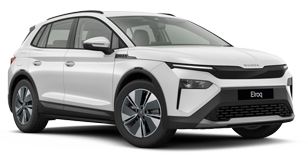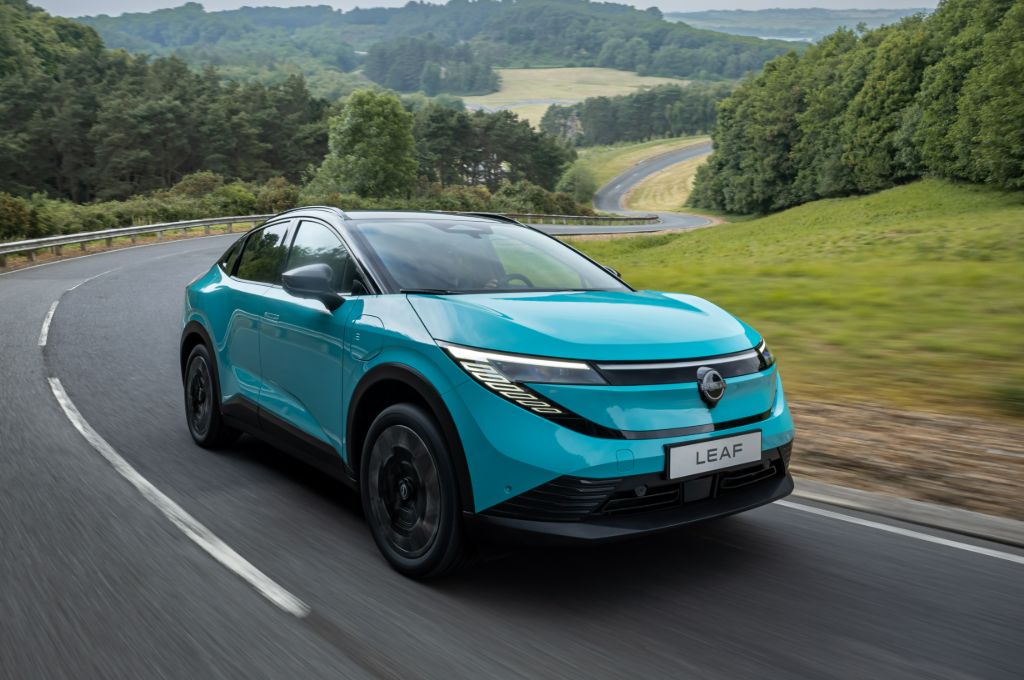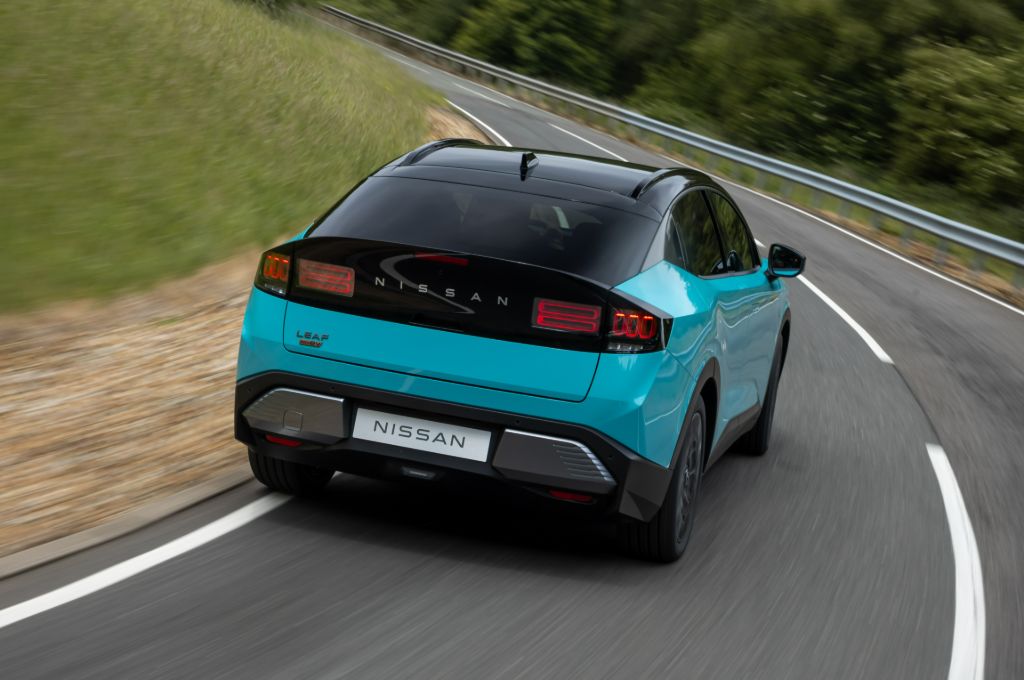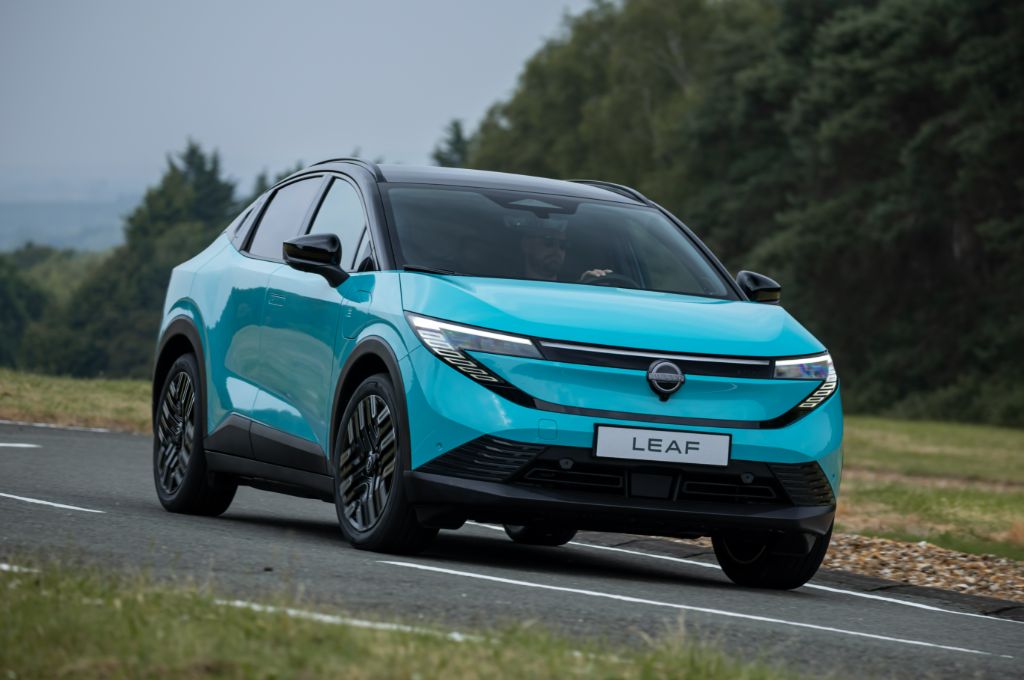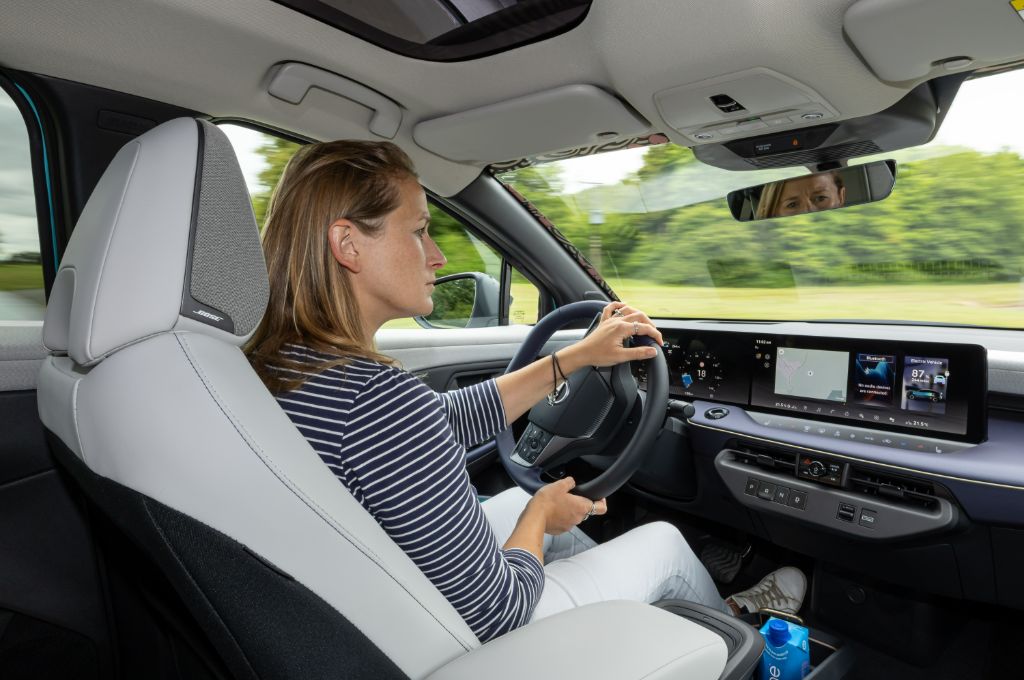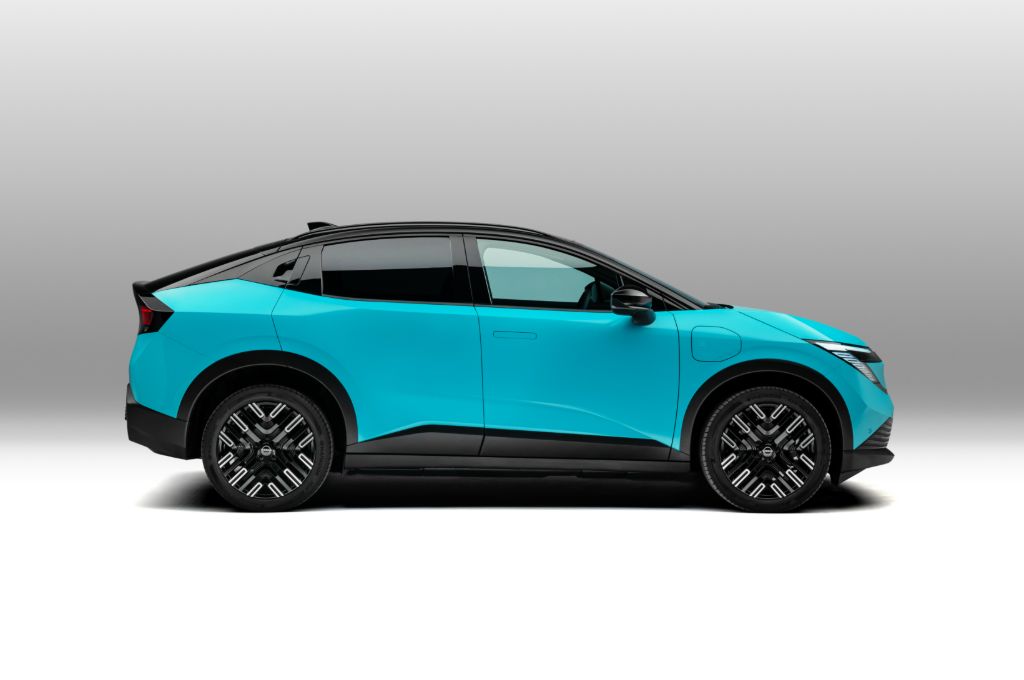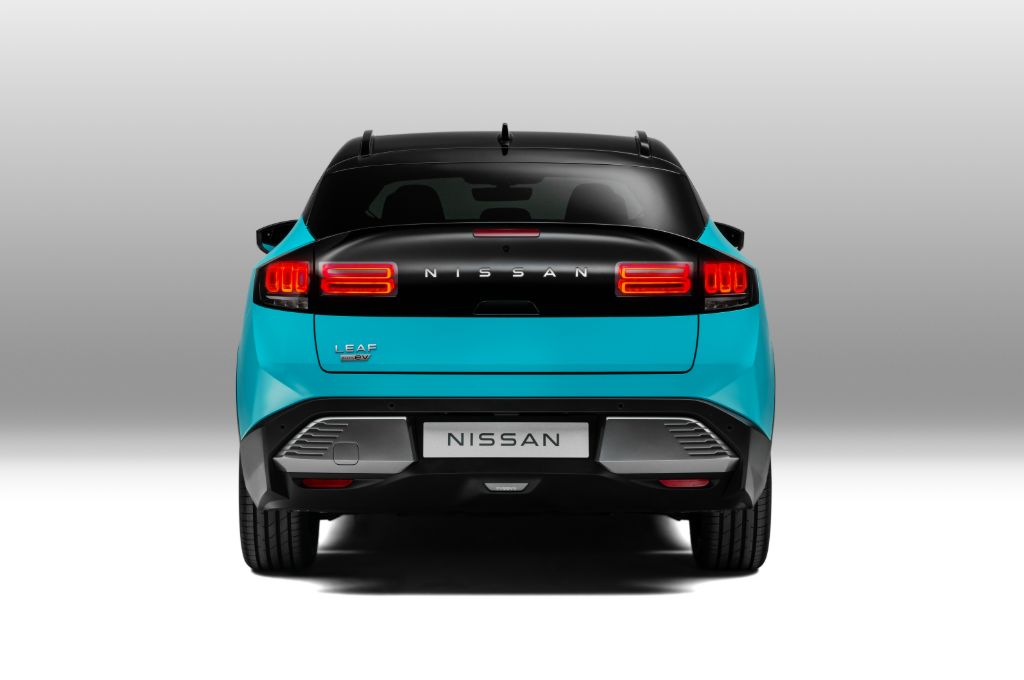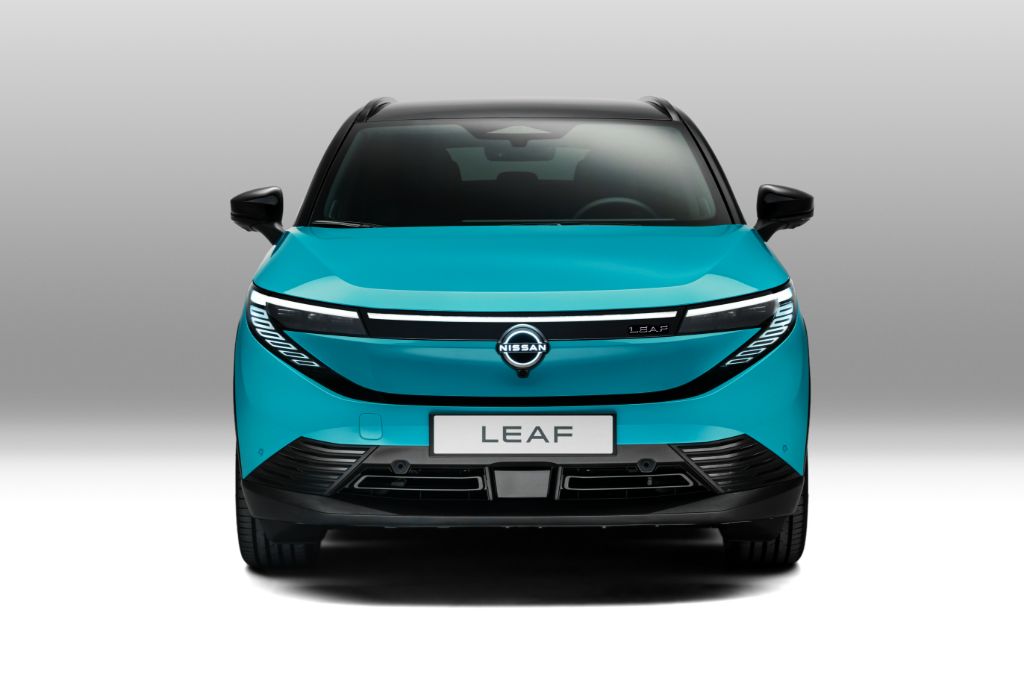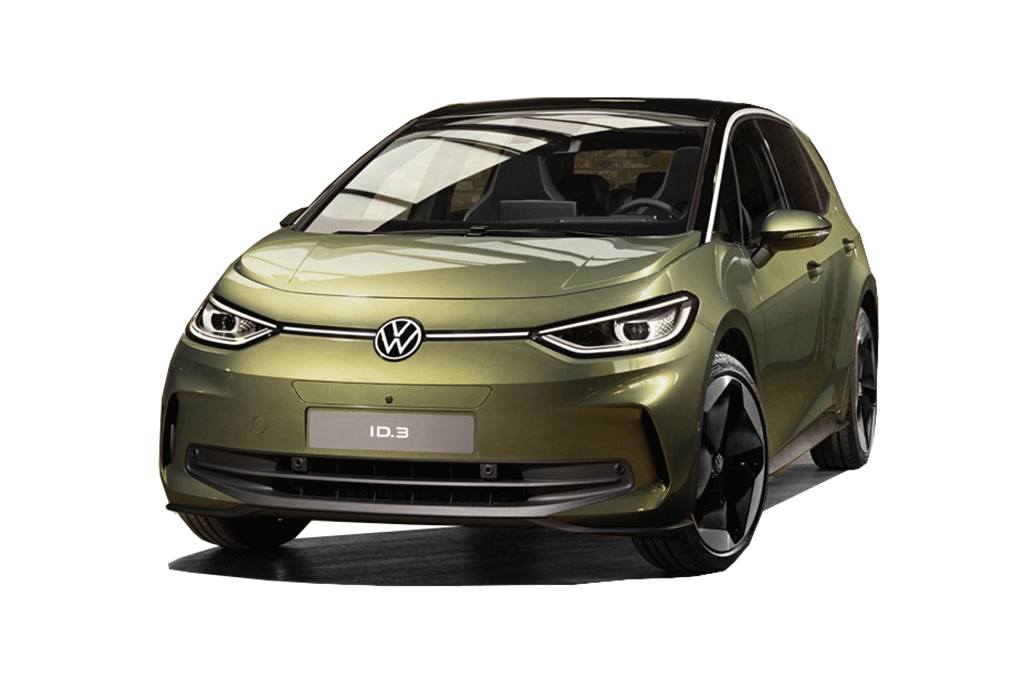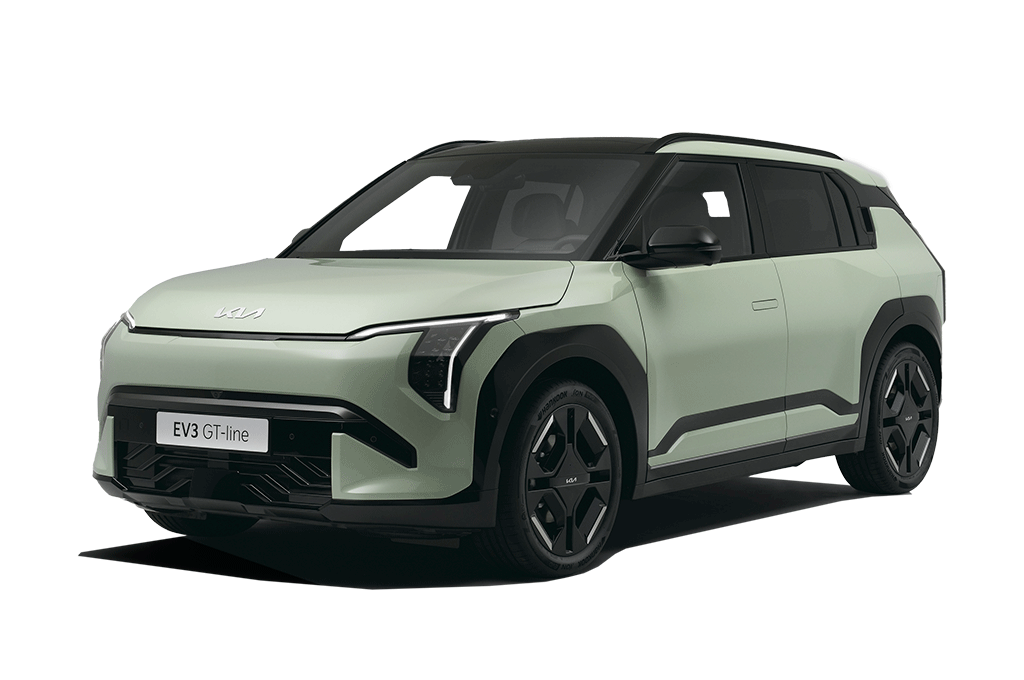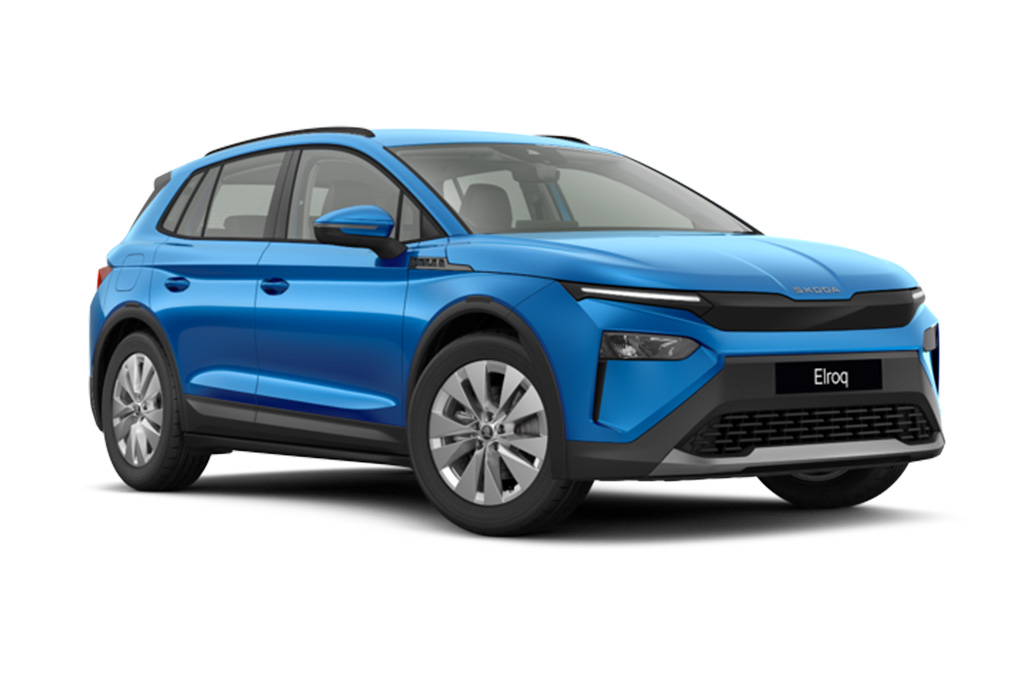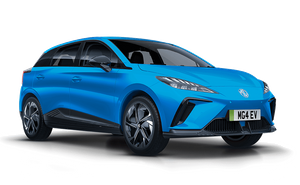Introduction and model history
The Nissan Leaf is a household name; the godfather of the mainstream electric car. But its popularity faded in recent years as the newer, longer range competition overshadowed it. Now, that's about to change with the all-new, third generation Nissan Leaf.
Based on a modified version of the CMF-EV platform that underpins the Ariya and Renault Scenic E-Tech, the new Nissan Leaf gets the option of two batteries offering a 271- or 386-mile WLTP range. It's super-efficient thanks to that sleek profile, new electric motor, active aero flaps that close or open depending on how fast you're driving, and lots of clever engineering and styling tweaks. For some context, our 2025 Electrifying Car of the Year - the Kia EV3 - manages the same 386 miles of range as the big battery Nissan Leaf, but it uses a bigger 78kWh battery to do it. And the Kia's also an efficient electric family car, so Nissan's tech and wizardry certainly seems to be paying off.
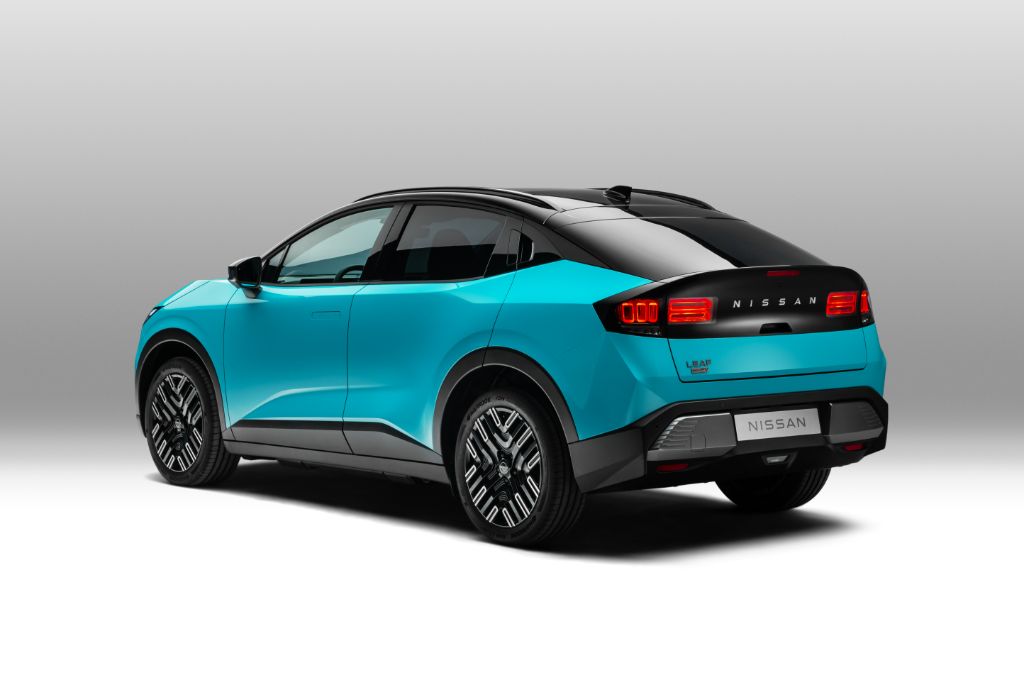
At 4.35 metres long, the Nissan Leaf is a bit smaller than rivals like the Renault Scenic, BYD Atto 3 and Skoda Elroq, but is spot on for key alternatives like the Kia EV3, Cupra Born, Volvo EX30 and VW ID.3.
Considering a used EV? Check out the nearly-new electric hatchbacks for sale on Electrifying.com
It looks very intriguing, complete with a slightly SUV-ish nose and a slick, sweeping roofline that leads to a rather modern-retro rear end that reminds us of a few '90s classics. Maybe the Honda CR-X or Nissan 300ZX? I love it, anyway, and those 3D rear lights look very cool. It's a complete departure from the previous Leaf models, and that may be no bad thing.
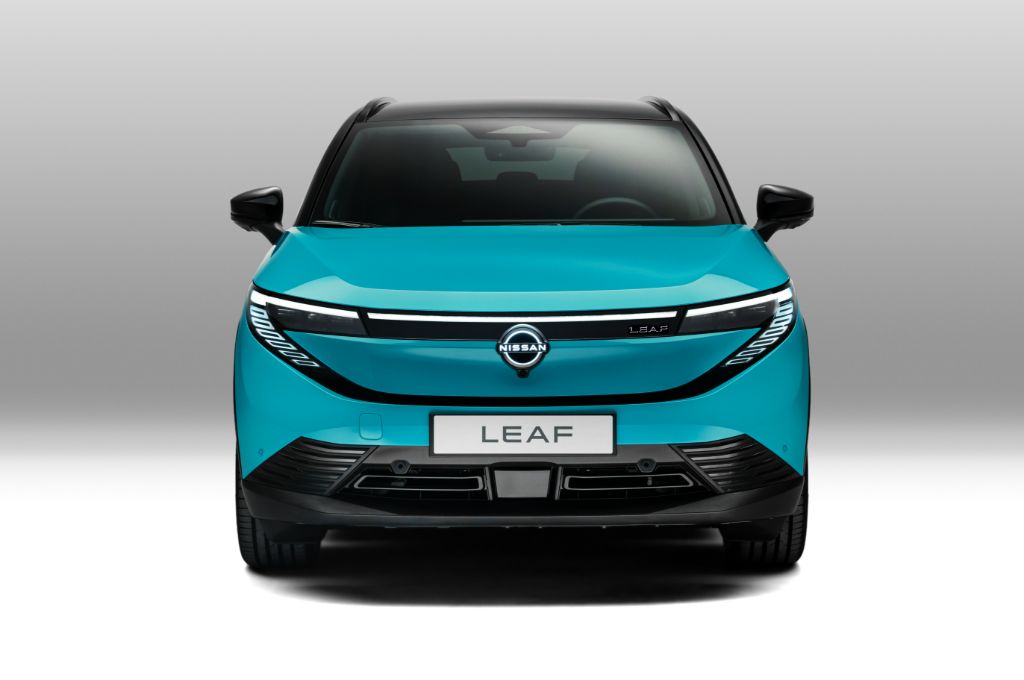
Oh, and let's not forget: The Leaf will be built in the UK at Nissan's Sunderland plant. Even the battery pack and cells will be manufactured at the (partly Nissan-owned) AESC plant, also in Sunderland - just over the road from the car's production line. Finally, we'll have a British-built electric car! Hurrah! And, that means that the Nissan is very likely to be eligible for the full £3,750 Electric Car Grant (ECG) currently being offered in the UK - making the Leaf the cheapest way to get such a long-range EV. You can find out all about the grant, and the cars that are eligible for it, by reading our full guide.
Range, battery and charging
You get a choice of two lithium-ion NMC batteries. The smaller 52kWh battery gets a maximum claimed WLTP range of 271 miles, while the larger 75kWh battery manages 386 miles. That puts it right into Kia EV3, Skoda Elroq and Renault Scenic territory, by the way, so the new Leaf has got some serious competition. Interestingly, Nissan is really making an effort to publicise real world figures for the Leaf, which I think is a brilliant move in the right direction; we really need more transparency from manufacturers when it comes to real-world range and charging numbers.
Anyway, Nissan tells us that the 75kWh Leaf will return 211 miles of real-world range at 80mph. It's figured out that this means, over an eight-hour motorway journey with two 30-minute charging stops, you can cover 497 miles in total—comparable to what a petrol car would do in the same time. Nice work, Nissan! The batteries are also liquid-cooled and thermally managed, and will automatically pre-heat when you set a charging stop in the nav - or you can manually tell the car when to pre-heat the battery, if you prefer.
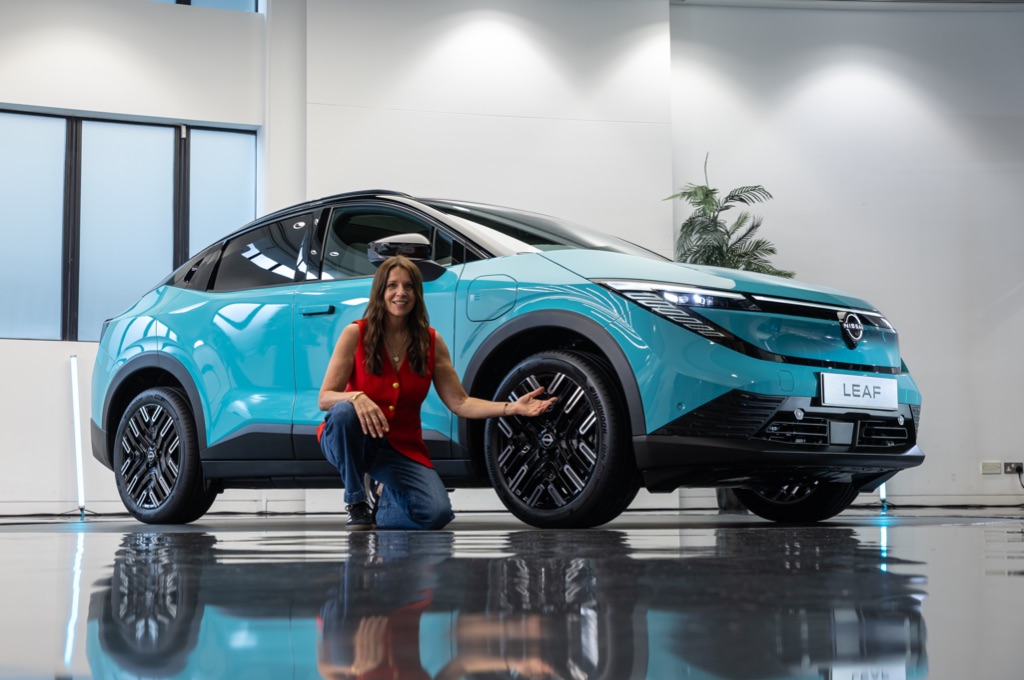
There's also V2L and V2G across the range, allowing you to use your car’s battery to power any electrical device —like your garden power tools, your kettle, your camping fridge —directly from your car.
Charging speeds are up to 150kW in the bigger battery model, which will add 259 miles in just 30 minutes - it's interesting that Nissan is talking miles added when you charge rather than just focusing on percentages - I think it makes a lot more sense! That's why we often try to talk about how long it takes to add 100 miles of range, as well as the usual 10-80% rapid charging time. The smaller battery car has a peak rapid charging speed of 105kW, which is still pretty competitive with most rivals and should gain you that 100 mile top-up in roughly 25 minutes.
Our only minor irritation with the Nissan charging is that the CCS and Type 2 sockets (which are the European standard and will be compatible with all home chargers and the vast majority of public chargers) are in the front wing of the car. Nissan says that this is because it’s customers prefer to drive into charging bays nose-first. I really prefer reverse parking, and generally find charging ports at the rear of the car to be more practical, but it’s a matter of taste and you may feel differently!
Practicality and boot space
The Nissan Leaf isn’t quite the most spacious option in the class. It gets a 437-litre boot with a clever triple-decker boot floor that can be lifted to reveal loads of underfloor storage, and then there's cable storage underneath that. Very neat. You can also use the floor to divide the boot, so that you keep all your shopping bags from falling over on the trip back from the shops. A Renault Scenic or Skoda Elroq both have bigger boots, but they're also more SUV-ish, which you may not be a fan of.
The back seats are comfortable and spacious enough for a chunky rear-facing car seat or taller adults, but I have to say that there's quite a bit more head- and legroom in a Skoda Elroq or MGS5 EV. There's also a centre armrest and a couple of USB-C charging ports in the Leaf, and there's enough head- and legroom for a taller adult to sit comfortably - even if you’ve gone for one of the higher-spec cars that gets a fixed panoramic roof. Nissan has gone for adjustable opacity, so you flick a switch and shade whichever part of the roof you want shaded - which also saves 30mm of headroom over having a scrolling shade.
Interior, design and technology
The twin 14.3-inch screens dominate the Leaf's dash, but the air-con temperature control buttons beneath the screen, as well as the drive mode and one-pedal driving button, means that you don't have to use the screen for absolutely everything. However, when the you do have to use the screen it's no hardship. The central touchscreen houses in-built Google software so that you benefit from Google maps and other downloadable Google apps and games. It’s also configurable, so you can choose which shortcuts are on the home page. Naturally, wireless Apple CarPlay and Android Auto are standard.
Higher-spec Nissan Leaf models also get electric seat adjustment, and there’s even a massage function and a head-up display. The two-spoke steering wheel looks pretty cool, and the materials that are used around the cabin on the higher-spec car that we drove felt nice; tactile and pleasant to look at, if not quite as boutique as the interior you get in the Nissan Ariya. It certainly gives Kia, Renault and Skoda a run for perceived cabin quality, which is the most important thing.
Motors, performance and handling
I've driven Nissan Leaf around a handling track in Bedford, and now out on the public roads in Denmark at a European Car of the Year event, but it’s great to report that the new Leaf is tidy and satisfying to drive. It feels heavier and a bit less on its toes than the Skoda Elroq and Kia EV3 (or, indeed, the EV4 that it will also compete with), but it turns into corners nicely and feels unflappable and calm. Even at higher speeds there isn't too much wind noise, while ride comfort is well controlled and takes the sting out of any bigger intrusions. You do notice some patter and suspension noise over very coarse or eroded road surfaces, but the Leaf is generally a rather serene and enjoyable car to drive. Ginny's been out for a drive in it, too, and she agrees that it's really nice to drive. Responsive yet comfortable, I think sums it up.
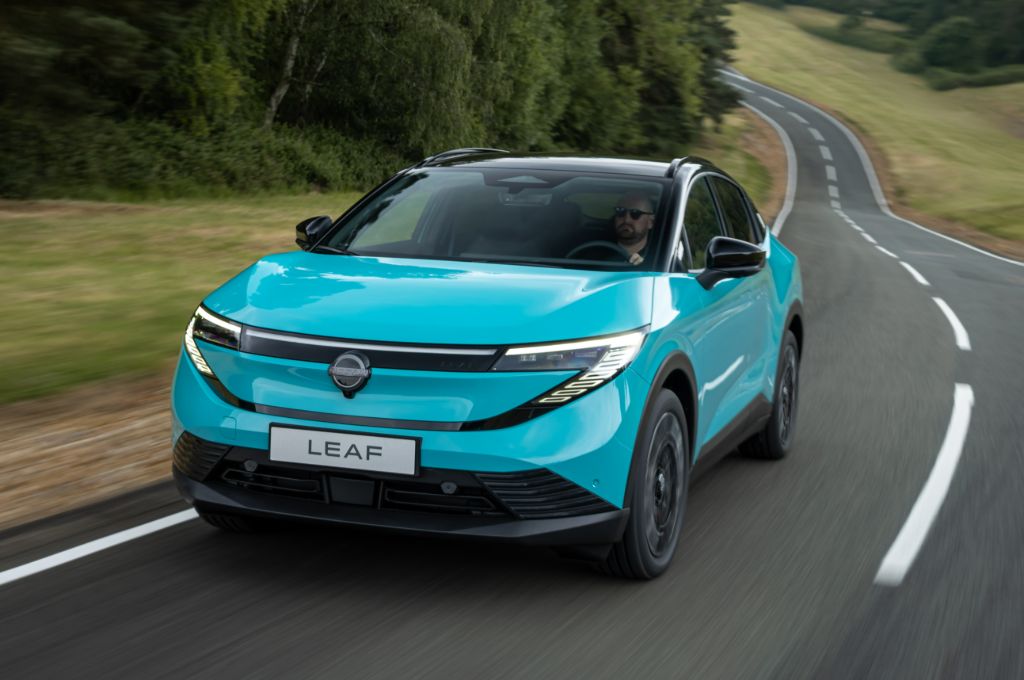
Light but predictable steering is a pleasure to use, and you can weight it up in Sport mode for a bit more urgency if you fancy it. I prefer it in the default Normal mode, as the Leaf is just one of those cars that encourages relaxed progress. Having said that, the performance isn't bad. It's a long way from the sort of pace you can get in the Tesla Model 3 and Volvo EX30, and the Leaf is front-wheel drive only (for now, at least) with either 174- or 215bhp depending on which battery you go for. That's good for 8.6- or 7.6sec respectively. I've only driven the 75kWh Nissan Leaf, which gets the more powerful electric motor and is certainly punchy enough to feel fast when you want it to, but never without losing that sense of laid back sensible-ness.
Brake regen’ is controlled via paddles on the steering wheel. You can toggle through to completely off, or you can step down through the mid-to-heavy settings. A button on the dash activates the Leaf’s adaptive, one-pedal ‘e-Pedal’ mode, which is great for around town or in that horrible crawling traffic that M25 commuters will be all too familiar with.
Running costs and pricing
Nissan hasn't given final pricing for the Leaf, just yet, but it has said that it expects the smaller battery model to cost from £33,000 while the bigger battery car will start from £36,000. It doesn't go on sale until the beginning of 2026, but Nissan is also confident that the Leaf will be eligible for the full, £3,750 government grant, which would make this such a brilliant value family EV! I really hope that they do confirm those figures; if Nissan can offer long range Leaf (with over 380 miles of range!) for close to £32,000, it is going to be on to a really big seller.
We don't know any more than that regards pricing, at the moment, but the Leaf will still have to be competitive on PCP finance and lease costs if it's really to steal sales from its popular rivals. Most buyers will purchase a car on monthly finance of some sort, so that's still really critical. Especially as the Leaf only gets a three year, 60,000 mile warranty while a lot of the competition including the MGS5, BYD Atto 3, Hyundai Kona and Kia EV3 all have much longer warranties. The Nissan's battery is covered for eight years and 100,000 miles.
Verdict
The Leaf is really interesting new option in the crowded family EV class. I think it looks really great, it feels techy and modern in a very good way, and I'm pleased that Nissan is really trying to give buyers easy-to-understand, real world information about the range and charging. It's a very well though-out car. And it also feels very much like a Nissan rather than a rehashed Renault, which is what I was most worried about. It's thoughtful, clever and weirdly likeable, and it's got the range, the space and the tech that people want. Not to mention that amazing pricing. We need more time with it to really get to know the Nissan Leaf properly and gauge its real-world range, but on this evidence, Nissan might just have its mojo back.
Like the new Nissan Leaf? Try these...
Want all the latest electric car news, reviews and videos? Sign up to the Electrifying newsletter, and don't forget to check out the Electrifying podcast.





